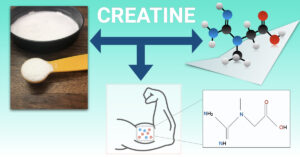Introduction
Before you can walk, you need to learn to stand. Likewise, before you can go on a dedicated bulk to build muscle or a dedicate cut to lose fat, you need to figure out your calorie maintenance. Your calorie maintenance, or Total Daily Energy Expenditure (TDEE), is essentially the number of calories needed to keep you functioning at your current weight and activity level. Assuming your body weight has been relatively stable and your activity level isn’t drastically deviating from the norm, this number is fairly easy to estimate. It’s important to understand that you won’t be able to calculate a precise number for your calorie maintenance. Even if you could calculate an exact value for a day, this number wouldn’t be the same the day after no matter how consistent you are with your eating habits and activity level. There are numerous, small, unconscious deviations in our habits that we make day-to-day that will affect this number regardless of how small the difference is. Fortunately, this is actually a good thing because this means we only need to estimate a number as close to your actual calorie maintenance as we can. In this article, I’ll show you three different ways you can do so!
Method #1 – Online Calculator
The first one is the easiest and that’s just to use a calorie maintenance calculator. You can find them online or through any meal-tracking app, like MyFitnessPal. Although I should make it clear that any app should work just fine. You can actually calculate this number using my own Calorie Maintenance Tool.
Now, most of these calculators are pretty straight forward “plug-and-chug” the numbers but make sure you get your units correct. Some of them use imperial system and some use metric units. The good thing about these calculators is that they are convenient and you have options to decide on which one you want to use. Some equations include more factors such as age and body fat, while others only consider your weight and activity level. If you want to have a rough estimate of your maintenance calories, any one of these calculators can give that you in no time.
The problem is that these equations really cannot account for the variations in individual body composition. Someone at 5’10” can have a much different Resting Metabolic Rate (RMR) than someone else at 5’10” depending on how much fat or muscle they have. Even when you account for these variations with different activity multipliers, you’re still getting an estimate that can be off. As an example, I calculated my maintenance calories from three commonly used equations and here are the results.
As you can see, there are some pretty noticeable variations. Which value should I choose? Two of these values differ by over 100 calories. That’s still a noticeable difference. Here’s an example: Let’s say my maintenance calories is at 2800 but I choose the calculation at 3000. I then choose to cut my calories by 200 because I want to lose weight at a slower pace. Well, all I’ve really done is put myself at maintenance value. There won’t be any noticeable change on scale. Eventually, I’ll come to realize this and then make further adjustments over time.
Method 2 – Tracking Your Calories
The second method is a bit more tedious and takes time but in my opinion it’s worth it to get a more accurate and individualized value. For one week, track your calorie intake without deviating from how you normally eat. Don’t judge or change your habits during this week. As long as your bodyweight has been relatively stable and your activity level isn’t drastically changing, the average calorie intake of that week should give you a reasonable value for your calorie maintenance. The only time this method may not work well is if your activity level suddenly changes during or very near the week you are tracking. The good thing about this method is that it is very individualized. Instead of using a standard equation, which can introduce a lot of variance, you’re using your OWN dietary habits to reach a value. The bad thing (and I don’t really consider this bad) is simply that it takes a little bit of time. But if you’re committed in gaining muscle or losing fat, odds are this tradeoff in time won’t really be that big of a deal. If you have even the slightest notion of how long it takes to build muscle or lose fat, you’ll know that patience is something you need when it comes to fitness. In fact, if you use an equation that gives you a value that’s off from your actual maintenance level, you’ll probably also be spending time adjusting until you find out what your actual value is.
Method 3 – Resting Metabolic Measurement
The third method is having your resting metabolic rate measured by a professional. I had this done through a process called MetaCheck where they measure your RMR through a 10 minute breathing test. This process needed to be done while I was in a fasted state and also early (or earlier) in the morning where I hadn’t done much of anything physically and…you know, was in a sufficiently fasted state. Aside from it being absolutely boring as hell sitting with a breathing tube in my mouth, it was a pretty interesting experience. Not one that I care to repeat though. What surprised me more was that the overall result of my calorie maintenance wasn’t too far of from my own estimation. It’s hard for me to suggest who would benefit from this method because on one hand, you can get your calorie maintenance value within 10 minutes with a pretty confident result. On the other hand, it’s not the most pleasant experience and it costs money. For me, it was $50, which is like the equivalent of paying 5 months of Netflix upfront. If you are just starting to get into the area of fitness, I really encourage you to go for the second method because that type of hands-on experience will not only get you off to a good start but it provides you with understanding on how to track your calories. However, if you are someone who is interested in the experience of having your RMR measured, like I was, or if you’re someone who is tracking their maintenance but also introducing a drastic change to their activity level or if time is just an issue, I would recommend this route.
Conclusion
While it’s important to accurately measure calorie maintenance before you try to build muscle or lose fat it’s also important to understand that you can’t get an exact and precise value. And even if you could, there is no way that number would be the exact same the day after. How you act day-to-day, no matter how consistent you are, will still have some individual variance. A lot of people think of their calorie maintenance as a value that they have to hit like a bull’s eye target. In reality, you simply want to get a value that is as close to that bulls eye as possible. Otherwise, you’re just going to stress out about this and that’s not really great either. In the end, calculating your calorie maintenance is a simply process that simply requires a bit of time.







